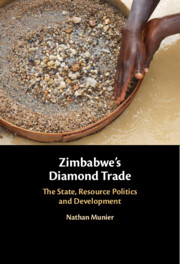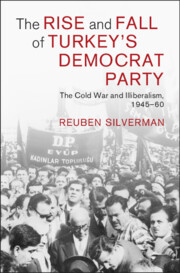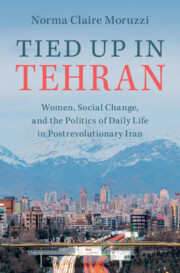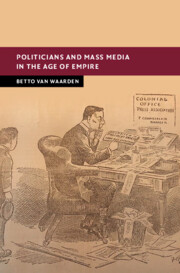Refine search
Actions for selected content:
273 results
Chapter 2 - Modernization, Life Satisfaction, and Political Trust
- from Part I - Political Guardianship Psychology and Political Trust
-
- Book:
- The Political Psychology of Citizens in Rising China
- Published online:
- 04 December 2025
- Print publication:
- 08 January 2026, pp 62-87
-
- Chapter
- Export citation
Chapter 7 - Traditional Values and Support for Democracy
- from Part II - Political Guardianship Psychology and Democracy
-
- Book:
- The Political Psychology of Citizens in Rising China
- Published online:
- 04 December 2025
- Print publication:
- 08 January 2026, pp 203-224
-
- Chapter
- Export citation
Chapter 10 - Evaluations of Democracy in the United States, India, and Taiwan
- from Part II - Political Guardianship Psychology and Democracy
-
- Book:
- The Political Psychology of Citizens in Rising China
- Published online:
- 04 December 2025
- Print publication:
- 08 January 2026, pp 280-308
-
- Chapter
- Export citation
Chapter 9 - Understanding Democracy without the “D-Word”
- from Part II - Political Guardianship Psychology and Democracy
-
- Book:
- The Political Psychology of Citizens in Rising China
- Published online:
- 04 December 2025
- Print publication:
- 08 January 2026, pp 252-279
-
- Chapter
- Export citation
So oddly calm: democratization and stock market liquidity in interwar Spain, 1914–1936
-
- Journal:
- Financial History Review , First View
- Published online by Cambridge University Press:
- 19 December 2025, pp. 1-34
-
- Article
-
- You have access
- Open access
- HTML
- Export citation
Preemptive multipartism and democratic transitions
-
- Journal:
- Political Science Research and Methods , First View
- Published online by Cambridge University Press:
- 19 December 2025, pp. 1-20
-
- Article
-
- You have access
- Open access
- HTML
- Export citation
1 - The Diamond Curse in Zimbabwe
-
- Book:
- Zimbabwe's Diamond Trade
- Published online:
- 06 November 2025
- Print publication:
- 04 December 2025, pp 1-22
-
- Chapter
- Export citation

Zimbabwe's Diamond Trade
- The State, Resource Politics and Development
-
- Published online:
- 06 November 2025
- Print publication:
- 04 December 2025
Introduction
-
- Book:
- The Rise and Fall of Turkey's Democrat Party
- Published online:
- 23 October 2025
- Print publication:
- 06 November 2025, pp 1-24
-
- Chapter
-
- You have access
- HTML
- Export citation
1 - Young Ottomans: The Origins of the Democrat Party, 1908–1946
-
- Book:
- The Rise and Fall of Turkey's Democrat Party
- Published online:
- 23 October 2025
- Print publication:
- 06 November 2025, pp 25-60
-
- Chapter
- Export citation
2 - Children of the Revolution: Defining the Democrat Party, 1946–1950
-
- Book:
- The Rise and Fall of Turkey's Democrat Party
- Published online:
- 23 October 2025
- Print publication:
- 06 November 2025, pp 61-98
-
- Chapter
- Export citation

The Rise and Fall of Turkey's Democrat Party
- The Cold War and Illiberalism, 1945–60
-
- Published online:
- 23 October 2025
- Print publication:
- 06 November 2025
8 - Conclusion
-
- Book:
- Return of Tyranny
- Published online:
- 17 September 2025
- Print publication:
- 23 October 2025, pp 234-248
-
- Chapter
- Export citation
1 - Introduction
-
- Book:
- Return of Tyranny
- Published online:
- 17 September 2025
- Print publication:
- 23 October 2025, pp 1-17
-
- Chapter
-
- You have access
- HTML
- Export citation
Chapter 2 - The Politics of Press Consumption
-
- Book:
- Politicians and Mass Media in the Age of Empire
- Published online:
- 20 September 2025
- Print publication:
- 09 October 2025, pp 62-94
-
- Chapter
- Export citation
Conclusion
-
- Book:
- Politicians and Mass Media in the Age of Empire
- Published online:
- 20 September 2025
- Print publication:
- 09 October 2025, pp 349-369
-
- Chapter
- Export citation
7 - American Hierarchy and Its Discontents: Unpacking the Consequences for Partner States
-
- Book:
- Hierarchy and the State
- Published online:
- 20 August 2025
- Print publication:
- 02 October 2025, pp 138-160
-
- Chapter
- Export citation

Tied Up in Tehran
- Women, Social Change, and the Politics of Daily Life in Postrevolutionary Iran
-
- Published online:
- 28 September 2025
- Print publication:
- 16 October 2025
Conclusion
-
- Book:
- Killing the Messenger
- Published online:
- 05 September 2025
- Print publication:
- 25 September 2025, pp 191-194
-
- Chapter
-
- You have access
- Open access
- HTML
- Export citation

Politicians and Mass Media in the Age of Empire
-
- Published online:
- 20 September 2025
- Print publication:
- 09 October 2025
